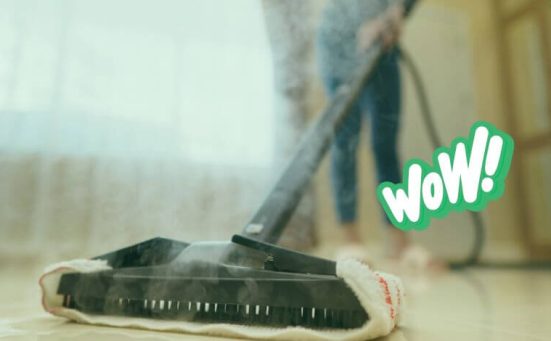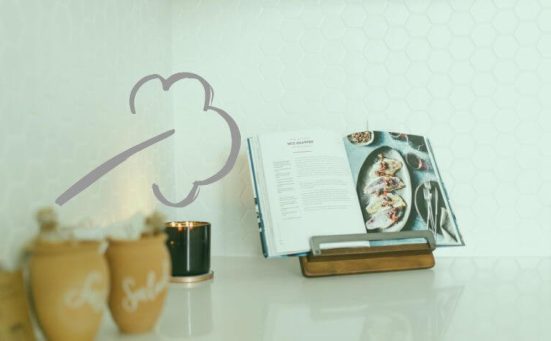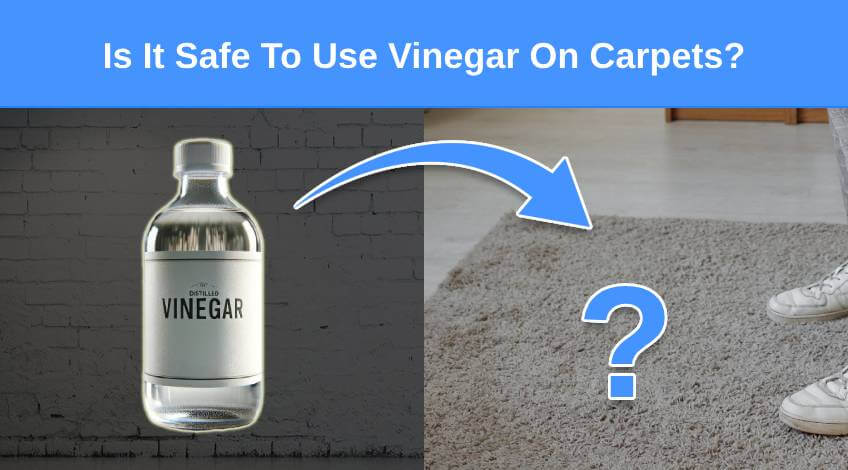
Is It Safe To Use Vinegar On Carpets?
Wondering if it’s alright to use vinegar on your carpets? You’re not alone! After all, many of us are turning to natural cleaning solutions like white vinegar!
To keep it short: Using white vinegar on your carpets for cleaning is safe, as long as you dilute it with water, do a patch test, and know that the carpet’s material is sturdy and can handle the acidity of the vinegar.
For delicate carpets made of wool, silk, and natural materials, using a shop-bought carpet cleaner that’s made for natural fibres would be a better choice to prevent damaging them.
How To Use Vinegar On Your Carpet Without Damaging It!
Before anything else, what kind of vinegar should you use?
For cleaning, removing stains, disinfecting, and more, your best option will be white vinegar. This is because it will likely not stain or damage the fabrics in your carpet.

White vinegar contains acetic acid, which helps dissolve dirt, grime, and various stains. However, although it is a multipurpose product you can use on a lot of surfaces, there are still some rules to follow as there’s always a possibility of bleaching or damaging sensitive surfaces or fabrics.
Here are some things you need to know, do, and watch out for:
Before Application
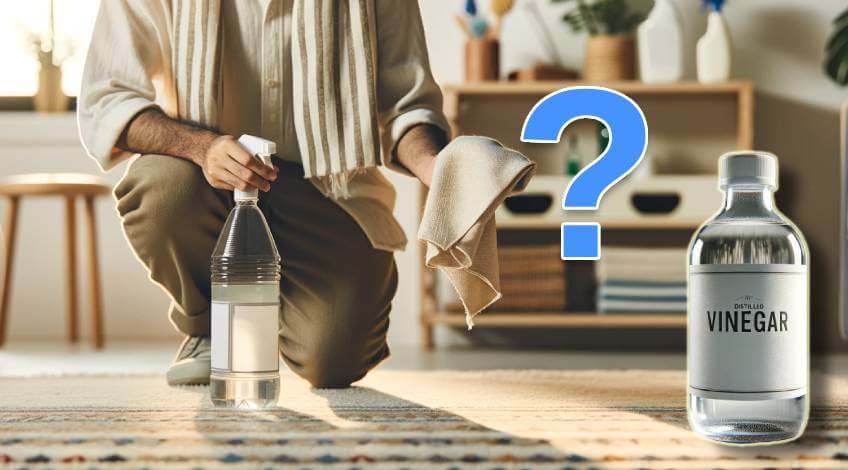
It Is Best Used For Synthetic Carpets
Vinegar is most suitable for synthetic carpets like nylon or polyester. These materials are less likely to be damaged by the acidic nature of vinegar compared to natural fibres.
If your carpet is made with natural fibres like wool and silk, skip the white vinegar. Otherwise, expect to see fraying and pilling on your pricy carpet.
It Has A Strong Smell
Be prepared for the strong, distinctive smell of vinegar. This odour can be quite strong during application but will eventually go away after cleaning.
If the sour smell of vinegar doesn’t bother you, you may not even notice it!
It May Not Be Able To Remove Old Stains
Vinegar is effective for recent stains, especially organic ones. However, it might struggle with older, set-in stains.
If you just spilled wine, juice, glue, or had a separate accident on your carpet, immediately get to work if you want to use vinegar to remove stains. Otherwise, the solution will not be potent enough to remove it and you may have to buy a special stain remover.
It Has To Be Diluted
Always dilute the vinegar with water before use. A recommended ratio is one part vinegar to one to two parts water. This helps prevent potential damage to carpet fibres.
To make application much easier, we recommend mixing the vinegar and water together in a container and then putting it in a spray bottle. This way, you can just spritz on a particular spot on your carpet in just seconds.
It Is Necessary To Patch Test
Before applying vinegar to the entire carpet, do a patch test on a small, inconspicuous area to ensure it doesn’t cause discolouration or damage.
To do this, apply the vinegar solution on a hidden part of your carpet, then wait for a few hours. Observe if there is any discolouration on its surface. If not, continue.
TIP: Before you start using white vinegar on your carpet, ventilate the room and keep children and pets away for a more seamless cleaning experience.
During Application
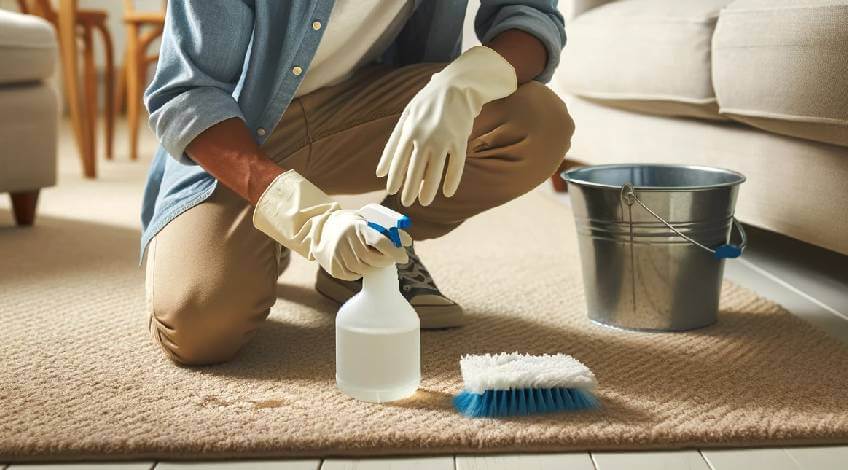
Remove Solid Matter First
If you spilt food or there is solid matter on your carpet such as hardened mud, it’s best to remove it first.
To do this, just scoop up any solid matter with your hands or a towel, doing your best to only leave liquid stains on the carpet. If it is very soaked, you can put a towel over the area and allow it to absorb excess moisture.
If you want to use vinegar to clean the entire carpet, make sure to vacuum it first.
Blot – Not Scrub
When applying the vinegar solution, blot the stain gently using a clean microfibre cloth. Avoid scrubbing, as this can damage the carpet fibres and spread the stain.
All you need to do is spray the vinegar solution on the carpet and lightly dab the stain using the cloth. Make sure you thoroughly cover all stains with the solution.
If you’re cleaning your carpet with vinegar, you can mix the solution in a bucket, then use a clean cloth to dampen the surface with it.
Add Bicarbonate Of Soda (Optional)
For tougher stains, you can sprinkle bicarbonate of soda on the stain before applying the vinegar solution. This can help lift the stain more effectively.
Do note that you may see a slight fizzle when adding the white vinegar to the bicarbonate of soda. This is a normal chemical reaction. Use a clean microfibre towel to dab the mixture deeper on the surface of the carpet.
WARNING: Do not mix white vinegar with bleach! It can create a toxic fume that can cause bad effects when inhaled.
Remove Excess
After applying the vinegar, make sure to remove any excess moisture. This can be done by blotting with a dry cloth or towel. Use the palm of your hands to firmly apply pressure and blot the towel on wet areas.
TIP: More is not better! Putting more vinegar on your carpet than necessary will just be a waste and make it smell foul.
After Application
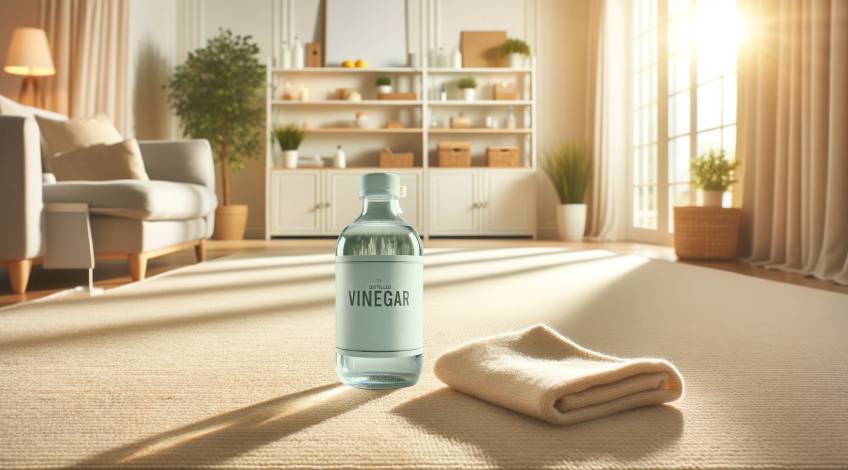
Ventilate The Area
Open windows or use fans to ventilate the area. This helps in faster drying and reduces the lingering smell of vinegar.
Observe Your Carpet
After the carpet has dried, check the treated area for any changes in colour or texture, and ensure the stain is completely removed.
If you dilute the solution and apply it to a carpet with synthetic material, you won’t have any issues.
Blot Treated Area With Water (Optional)
If you’re nervous that leaving traces of the vinegar on your carpet may cause it to discolour, you can always dampen a clean cloth with water, and then apply it to the treated area. This way, you’re removing the residue from your carpet. Allow to dry and you’re done!
TIP: To hasten the drying process, you can always turn on a fan or a dehumidifier.
The Benefits Of Using Vinegar On Your Carpet
If you’re not convinced that white vinegar has other uses aside from being in your salads, here are the advantages of using it as a cleaning tool:
It Is Inexpensive
Vinegar is a cost-effective cleaning solution compared to many commercial cleaners.
On average, white vinegar would cost around £3 to £5 per litre, and less if bought in bulk. Meanwhile, carpet stain removers could cost around £2 to £10 for a 500 ml bottle.
It Is Natural And Eco-Friendly
Being a natural product, vinegar is an eco-friendly option that avoids the use of harsh chemicals.
If you are very sensitive to chemicals or just want to use a natural approach, white vinegar will always be your best bet. This is especially the case if you don’t want to expose your family to harsh chemicals that may cause allergies and irritations.
It Helps Remove Foul Odours
Vinegar is effective in neutralising and removing bad odours from carpets. Adding bicarbonate of soda to the mixture will also make foul smells disappear faster.
It Removes Stains
Especially effective on organic stains, vinegar can help maintain the appearance and longevity of your carpet.
Other Options For Cleaning And Removing Stains
When it comes to maintaining the cleanliness and appearance of carpets, various household items can be quite effective in treating different types of stains.
Here’s a look at some alternative methods:
Shop-Bought Cleaners And Stain Removers
Commercially available cleaners and stain removers are formulated for various carpet types and stains.
Since they are made with a variety of chemicals, they are highly effective at their job, though can be quite expensive.
- 4 X Dr. Beckmann Carpet Stain remover with cleaning applicator/brush -650ml
- Product type: LAUNDRY DETERGENT
Washing-Up Liquid
Ideal for general stains, a solution of washing-up liquid and water can be gently blotted on the carpet to lift stains.
Just use a clean cloth to blot the solution to stains, allowing it to sit for 30 minutes to an hour. Then, use a separate cloth to pat warm water on its surface until all the soap is removed.
- WASHING UP LIQUID - washing liquid that is tough on grease to leave your dishes squeaky clean.
- BRIGHT DISHES - Our all-in-one dishwashing liquid formula is expertly crafted to deliver powerful cleaning performance in both hard and soft water, ensuring sparkling clean dishes with every wash
Hydrogen Peroxide
Great for organic or tougher stains, hydrogen peroxide can be used as a bleaching agent. It’s particularly effective on colour stains but should be used with caution as it can bleach some carpets or damage their fabrics.
- Hydrogen Peroxide 3% Solution can be used to clean and disinfect minor cuts, scrapes, and wounds. It helps remove dirt, debris, and bacteria, promoting healthy healing.
- Many people use diluted hydrogen peroxide as a mouthwash to kill bacteria, reduce bad breath, and improve overall oral hygiene. Remember to never swallow hydrogen peroxide.
Bicarbonate Of Soda
Known for its odour-absorbing properties, bicarbonate of soda is effective for removing smells and light stains from carpets. It is more effective when used in combination with vinegar for stain removal.
- Clean & Natural Bicarbonate of Soda 500gm
Acetone
Acetone can be effective on certain types of stains, like nail polish, but it should be used carefully as it can highly damage some carpets.
- SUPER STRENGTH FORMULA: Refresh yesterday’s style and remove all types of nail polish with our premium acetone nail polish remover - it quickly, easily, and fully gets rid of leftover polishes, gels, acrylics, and tips.
- 100% PURE ACETONE: Give your nails the luxe they deserve. We use only the purest and cleanest grade of acetone, and our remover contains no hidden ingredients, parabens, sulfates, or oils.
So, Will You Clean Your Carpet With Vinegar?
Using vinegar on your carpets can be a safe, eco-friendly, and cost-effective solution, but it’s not without its limitations.
Understanding your carpet’s material, diluting the vinegar properly, and following these tips will ensure a clean and damage-free carpet.
Do you have questions? Ask away!
SEE ALSO: Is It Safe To Use Vinegar In The Washing Machine?
Frequently Asked Questions
Yes, vinegar is a good carpet stain remover, and is very effective on recent, organic stains. Its acetic acid content helps to dissolve dirt and grime, making it a handy option for spot-cleaning.
No, you should not put vinegar directly on the carpet. It’s important to dilute the vinegar with water before use. The recommended ratio is one part vinegar to one to two parts water to prevent potential damage to carpet fibres.
It’s not advisable to leave vinegar on the carpet overnight. Extended exposure to the acidic nature of vinegar can potentially harm the carpet fibres. It’s better to apply the diluted solution, blot the stain, and then remove any excess moisture.
Vinegar can cause discolouration, especially on carpets made of natural fibres like wool and silk. It’s necessary to conduct a patch test in an inconspicuous area before full application to ensure it doesn’t cause any adverse effects.
The benefits of using a dehumidifier include speeding up the drying process after cleaning your carpet, especially when using solutions like vinegar. It helps in reducing the lingering smell and prevents the growth of mould and mildew in damp carpet fibres.
Also, follow us on Pinterest ...







